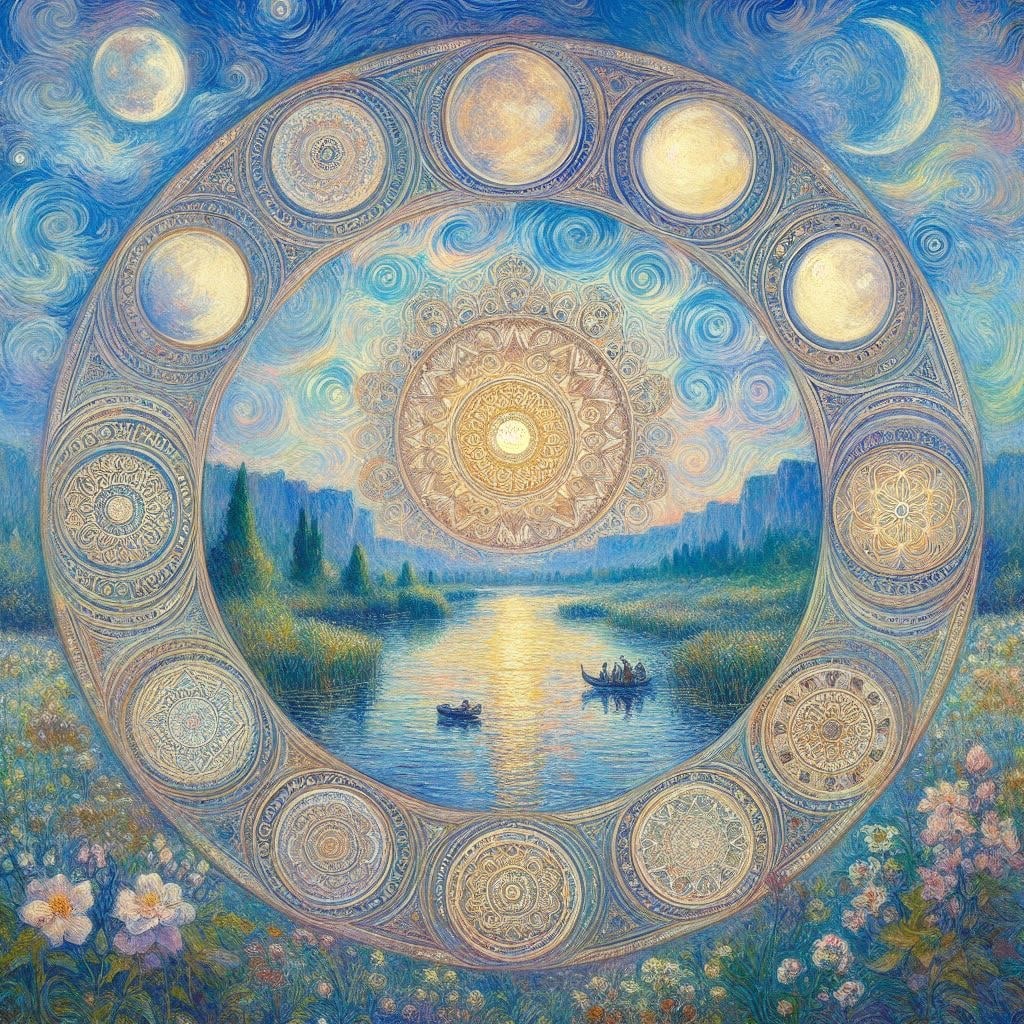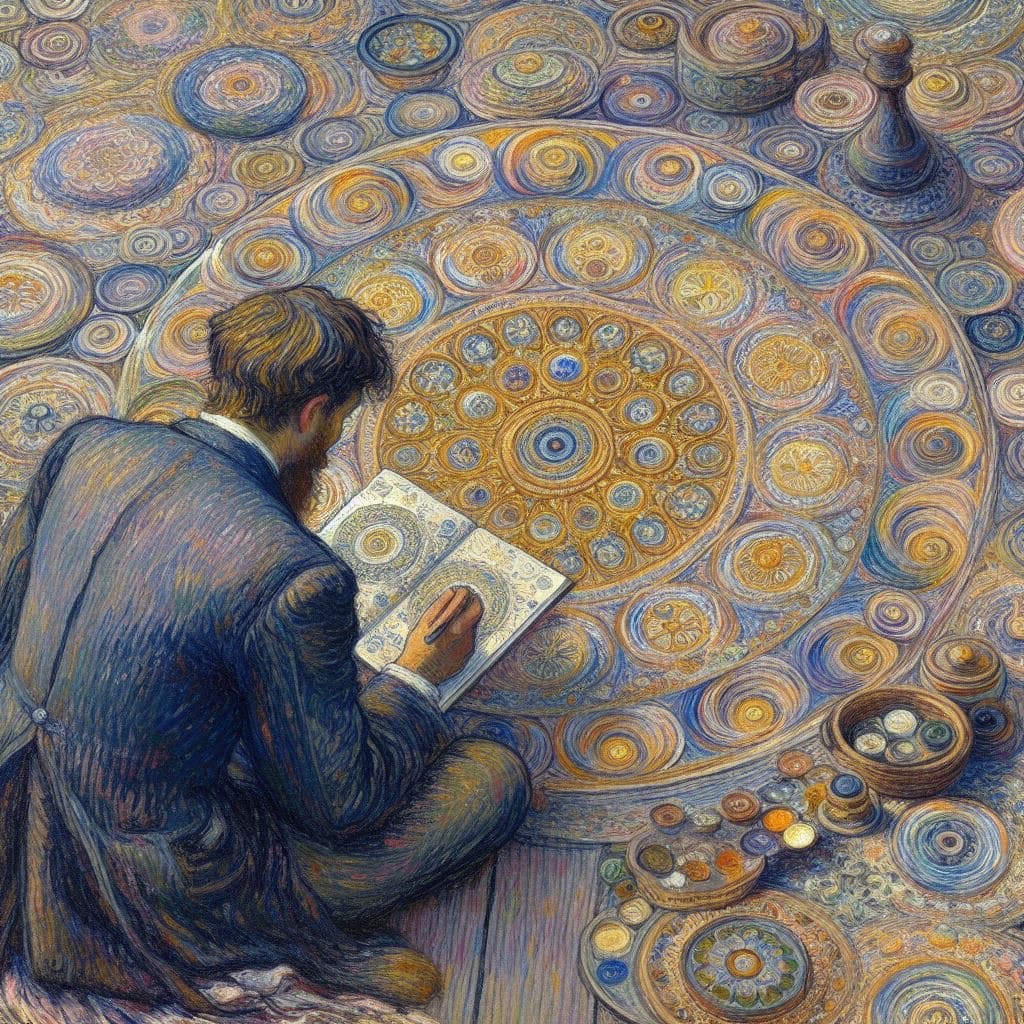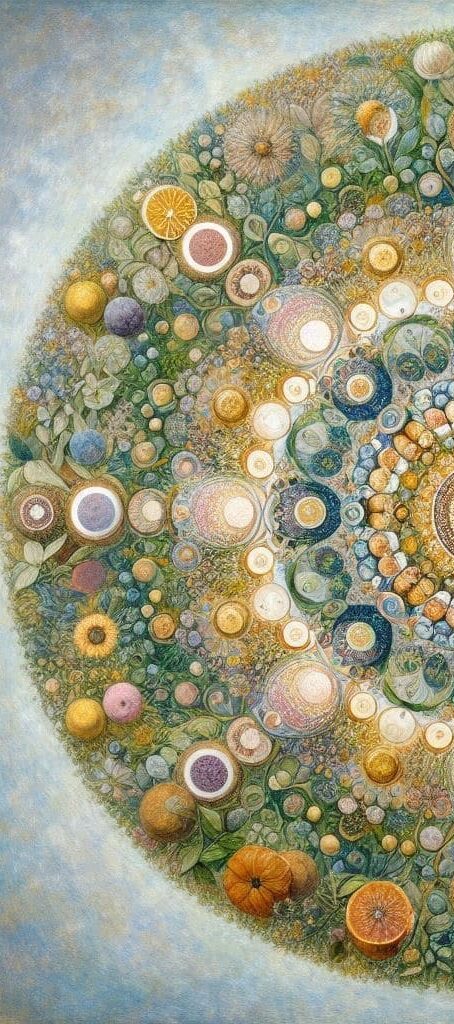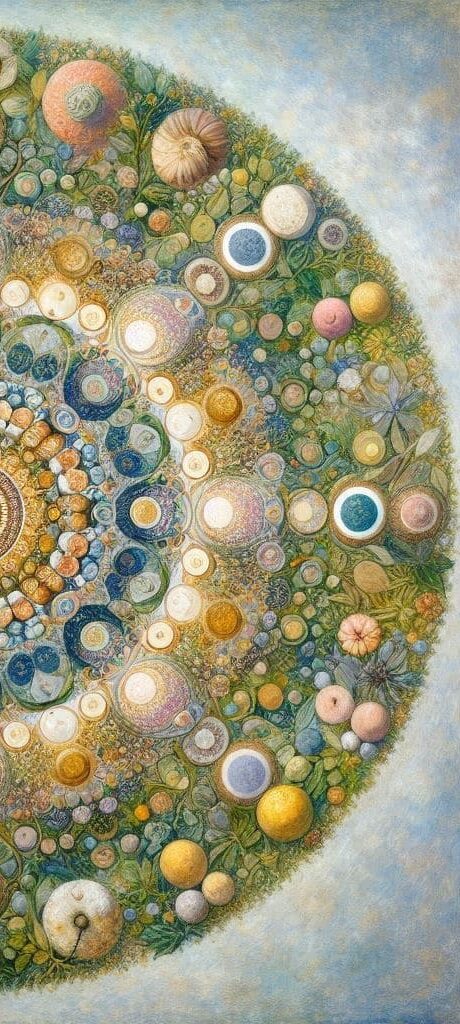GUIDE TO CREATING YOUR OWN MANDALA

Dear Participant, welcome!
We invite You to immerse Yourself in the world of Your subconscious and self-discovery through the creation of a mandala.
This is not merely drawing — it is a personal meditative process that will help You to understand Yourself more deeply, Your experiences, character traits, and inner states. The mandala will become a kind of mirror of Your soul, reflecting the current moment of Your life.

Carl Jung said
“We live in a fragmented existence, and the mandala is a portal that helps us become whole again”
Stage 1: Preparing to Create the Mandala
Create a Personal Space for Creativity
Your space should be comfortable, safe, and solely Yours.This is a space of silence, honesty with Yourself, and trust in Your inner voice.
Recommendations:
Choose a comfortable place where no one will disturb You.
Turn on light background music or remain in silence—choose what suits You best.
You may prepare aromatic tea or water.
If You wish—light a candle, use essential oils, a light blanket, a favorite pillow, etc.
Attune Yourself to the Process
Before starting, close Your eyes, take a few deep breaths, and consider:
“What do I want for myself right now? What emotions are living within me today? What am I ready to see in myself through the mandala?
Materials (Optional):
A4 or A3 paper
Pencils and colored pencils, markers, pastels
Compass or circular objects for tracing
Rulers, stencils
Eraser, pen for notes
Please note: the mandala is not related to religion, even if it uses symbols characteristic of certain traditions.

Stage 2: Creating the Mandala
Allocate at least 20 minutes for Yourself.
Draw intuitively. Do not plan or control—allow Your hand to move freely.
Fill the space as You wish. Every line, every color—is You.
You may start from the center or the edge—listen to Yourself.
Stage 3: Self-Reflection After Creation
After completing the process, take time to look at Your drawing with gratitude. Ask Yourself:
What do I see?
What emotions does my drawing evoke?
What dominates—shape, color, line?
Which color or symbol repeats?
What does the center of the mandala mean to me?
Write down Your thoughts—it can be very valuable.
Alphabet of General Interpretations
of the Drawing in a Circle
Introduction: How to Work with a Mandala
The main thing is the ability to instantly catch the message of the symbolic picture. It is important to rely more on intuition than on a cheat sheet.
After familiarizing Yourself with the meanings of colors, shapes, lines, and symbols, look closely at the details of Your mandala and pay attention to the first association. It usually most accurately reflects Your feelings and state.
Filling the Mandala: What Indicates Emotional State
Almost empty mandala (a lot of white background) – suppressed emotions, silence, difficulty in expression.
Many details – active communication, openness.
Predominantly chaotic elements – impulsiveness, emotional excitement.
Central Part of the Mandala
The center of the mandala is the “I” of the author. Everything else is the external world that influences this “I.” The center is the core of the personality, deep feelings, and desires.
Possible center variants:
Filled center – indicates inner content, current needs.
Empty center – readiness for change.
The entire mandala as the center – mature personality, holistic position.
Mandala Borders: How the "I" Interacts with the World
Bold, thick line – desire for protection, anxiety, closedness.
Thin, dotted line or breaks – internal conflict.
Colored border – favorable sign, harmonious protection.
Absence of borders – loss of psychological integrity.
Structure and Symmetry
Symmetry – harmony, inner balance.
Asymmetry – transformations, possible internal conflict.
Types of Lines
Straight lines – rationality, logic, control.
Wavy lines – emotionality, softness, intuition.
Women often draw a flower (emotionality), men—a star (purposefulness).

Meanings of the Most Common Symbols in the Mandala (Brief Dictionary)
Circle — perfection, wholeness, unity with the Universe, completeness, protection, fullness of life.
Square (especially in the center) — stability, balance, limitation, safety, moral principles, “gates” for energy passage, center of the soul.
Triangle — movement, harmony, love of life, power, wisdom.
Apex up — development, activity, growth.
Apex down — regression, self-destruction.
Cross — balance, choice, combination of opposites, crossroads, spiritual search, formation of a new personality.
Eye — need to see the situation better, striving for clarity, sense of control, need for a spiritual mentor.
Star — strength, leadership, confidence, constancy, mystical protection, purposefulness, potential. Many stars — competition of goals, great inner potential.
Tree — development, growth, creative energy, connection with family, family ties, acceptance of life cycles.
Animals — intuition, connection with natural instincts, need for protection, spirituality. (Each animal should be interpreted separately.)
Heart — love, emotions, spiritual warmth. Heart with an arrow — love with trials, unrequited feelings.
Spiral — development, life energy, acceptance of changes.
Clockwise — striving for growth.
Counterclockwise — fear of change, regression
Drops — tears, emotional cleansing, possible exhaustion.
Flowers — beauty, harmony, kindness, spiritual development, acceleration of personal growth, need for renewal, perception of life’s transience.
Color Symbolism in the Mandala
Red: Ability to defend one’s interests, activity. Symbolizes blood, sexual energy, attracts attention. In combination with black — aggression, stubbornness, intolerance, destructive energy.
Pink: Tenderness, sensuality, emotional fragility, kindness. May indicate frivolity, demonstrativeness, or excessive sensitivity.
Yellow: Sunshine, high intellect, inner warmth. Often indicates a good connection with the father.
Orange: High ambitions, opposition to authorities. Sometimes — inadequate self-esteem or desire for self-assertion.
Light Green: Revelation, renewal, growth, but requires external stimuli.
Green: Ability to care, maturity, stability. Excess may indicate rigidity or overprotection.
Light Blue: Lightness, calm, freedom, inspiration, creative thinking. May also indicate detachment or coldness.
Blue: Intuition, spirituality, cleansing, deep feelings. In excess — depression, anxiety.
Purple: Self-knowledge, mysticism, inner strength, intuition. Sometimes — tension, rejection of material, closeness.
Brown: Reliability, groundedness, sober calculation.
Black: Symbol of completion, transformation, new beginnings. May indicate fears, depression, protest, or willful concentration.
White: Striving for renewal, cleansing, clarity. In the opposite sense — disappointment, isolation, emptiness.
Gray: Realism, combination of opposites, caution. Also — indifference, laziness, closedness, unwillingness to open up.


What Else to Observe in a Mandala
Overall color harmony.
Notice how the colors combine: do they create a sense of balance or dissonance?
Color repetition.
Which colors dominate or reappear? This can indicate emotionally charged themes or amplified inner signals.
Absence of certain colors.
Avoiding a color may suggest a blocked emotion or energy (e.g., absence of red could reflect avoidance of conflict or suppressed action).
Prevalence of one color.
An excess of a certain color might show a fixation or emotional looping (e.g., a lot of blue may indicate deep contemplation or anxiety).
Contrasting combinations.
Opposing colors (such as black and white, red and green) might reveal inner conflict or a dynamic process of transformation.
Warm vs. cool colors.
Warm colors (red, orange, yellow) — outward movement, vitality, action.
Cool colors (blue, green, violet) — inward focus, intuition, cautiousness.
Is there a white background?
A significant amount of white can suggest openness to something new or a lack of structured inner form (especially if the mandala feels “empty”).
Tip: Pay attention not only to individual colors, but also to the overall color balance, combinations, dominance, or avoidance.

A Note on Limitations in Mandala Interpretation
A mandala is not a diagnosis or a verdict. It is a mirror of your current state — here and now.
Symbols and colors are multi-layered. Their meanings depend not only on universal “keys” but also on the individual’s context, associations, and state during creation.
Interpretation should not be frightening. Even “negative” signs (like black, an empty center, or broken lines) don’t necessarily indicate crisis — they may reflect a stage of transformation, a need for protection, or a pause.
One image does not define the whole person. A mandala becomes truly meaningful when observed over time or explored in a deeper self-work process.
Mandala is best interpreted with its creator. Asking them about their intentions, feelings during the process, or associations to the symbols is often more insightful than any symbolic “dictionary.”
Interpretation is not manipulation. Use your mandala insights to support self-understanding, healing, and personal growth — not to label, analyze others without consent, or impose meaning.
A mandala is more of a map than a compass. It shows aspects of your inner landscape — but direction only comes through your own engagement.